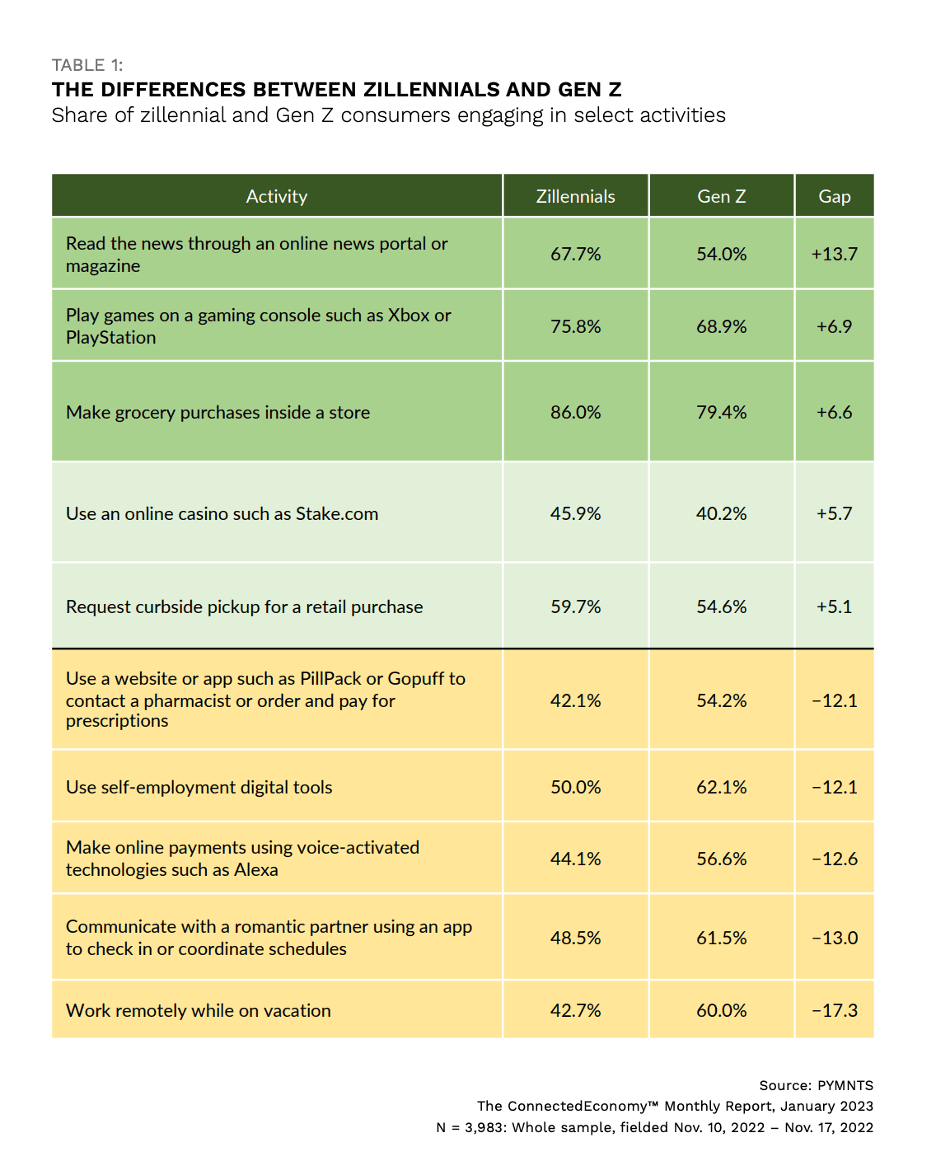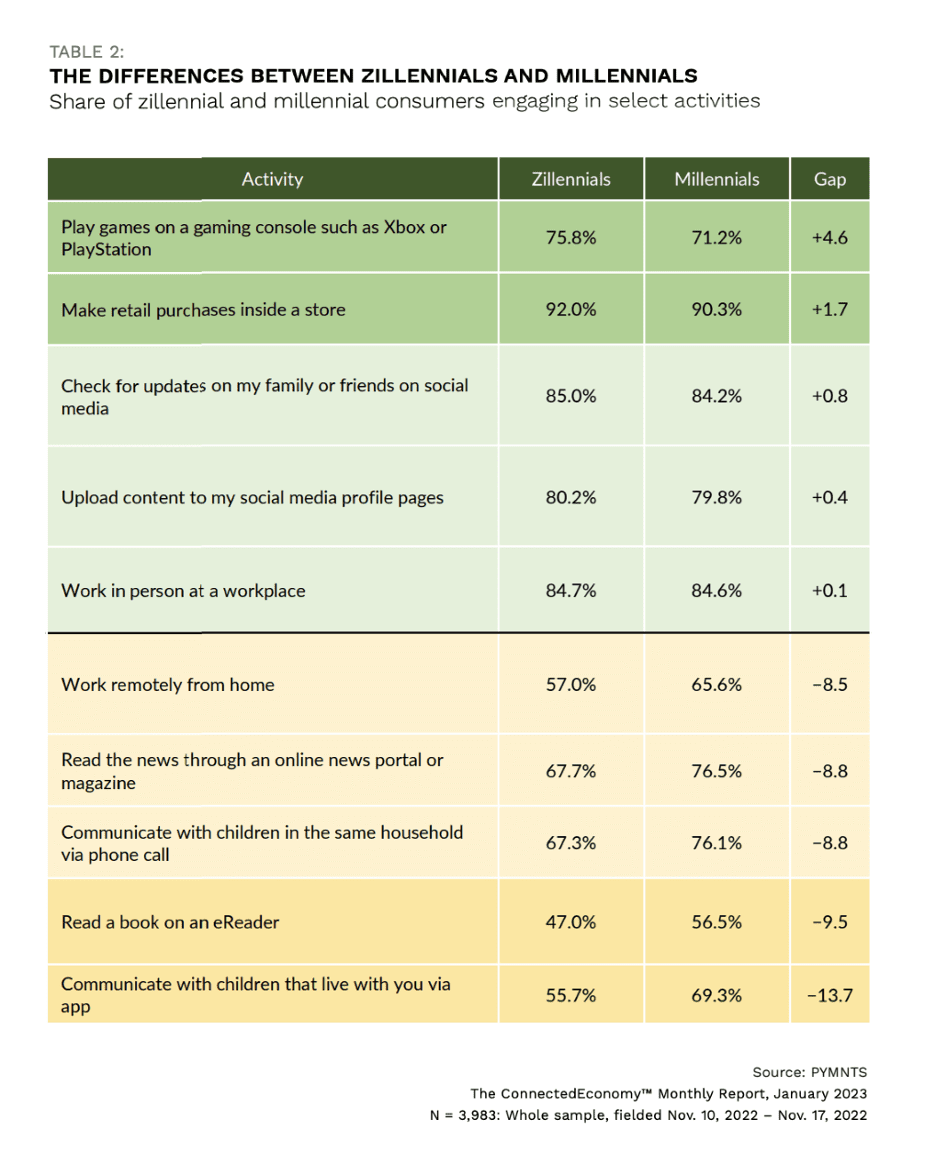59% of Gen Z ‘Zillennials’ Opt for Curbside Pickup

A group of 30 million consumers are tech savvy in ways never seen before in the U.S.
So much so that they’ve always been digitally connected. They’ve pretty much always used devices — mobile ones — to get what they need at all hours of the day and night.
And a significant percentage of these consumers — we at PYMNTS define them as zillennials — navigate daily life in omnichannel fashion, so retailers and other merchants must take heed.
In the “ConnectedEconomy™ Monthly Report: Meet The Zillennials” these users are markedly more digitally engaged than older generations such as the baby boomers and Generation X.

We define zillennials as consumers born between 1990 and 2000. That cohort includes older Gen Z consumers and younger millennials — a group that bridges what might be seen as the “gap” between those consumers.
As to just how digitally engaged these consumers are, the chart above shows that we found that zillennials spend time on streaming media and other platforms just about every day. They’re comfortable with apps, and with integrating real-world activities and online activities in a seamless flow. The data shows that more than two-thirds of these consumers go online to get their news; a whopping three-quarters of them play online games, more so than has been seen with, for example, with Gen Z consumers or millennials (as seen below).
But in a nod to an omnichannel existence, consider the fact that, as seen below, more than 59% of the zillennials request curbside pickup for retail purchases. The curbside convenience speaks volumes to the fact that many zillennials value convenience and flexibility as transact and as they conduct commerce — and by extension, they expect those options to be on offer from the businesses with which they interact. We found that zillennials are 6% less likely to live paycheck to paycheck than millennials and bridge millennials.
Zillennials thus have more disposable income than their elder siblings or peers. One-third of zillennials still live with their families to split or reduce expenses, while 58% live with a romantic partner. They’ve got the money to spend — retailers must meet them where they want to spend it.
